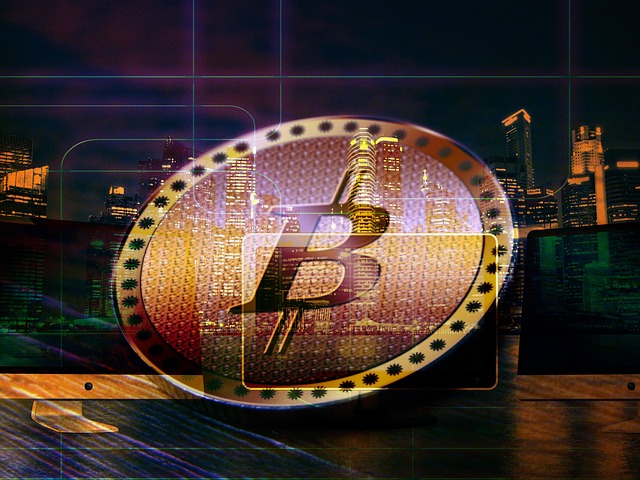What is a Futures Exchange and Its Role in 2025
Author: Jameson Richman Expert
Published On: 2025-09-18
Prepared by Jameson Richman and our team of experts with over a decade of experience in cryptocurrency and digital asset analysis. Learn more about us.
A futures exchange is a highly sophisticated, heavily regulated financial marketplace that facilitates the trading of standardized futures contracts—agreements whereby the buyer commits to purchasing, and the seller to delivering, an underlying asset at a predetermined price on a specified future date. These exchanges are foundational to modern financial systems, serving as critical hubs for price discovery, risk mitigation, and speculative activity across a broad spectrum of asset classes, including commodities, financial instruments, and digital assets. As we approach 2025, understanding the evolving functions, technological innovations, and regulatory frameworks surrounding futures exchanges is essential for investors, traders, and analysts seeking to navigate a rapidly transforming derivatives landscape with confidence, agility, and strategic foresight.

Introduction to Futures Exchanges
Futures exchanges are centralized platforms where market participants can buy and sell futures contracts—agreements that specify the type, quantity, quality, and delivery date of the underlying asset. Originating in physical commodity markets such as agriculture, metals, and energy, these exchanges initially served as hedging tools for producers and consumers facing volatile prices. Over centuries, they have evolved into complex financial ecosystems that incorporate advanced technology, strict standardization, and regulatory oversight to ensure transparent and efficient trading environments.
Today, prominent international futures exchanges like CME Group (Chicago Mercantile Exchange), ICE (Intercontinental Exchange), Euronext, and TOCOM (Tokyo Commodity Exchange) dominate global derivatives markets. They underpin critical functions such as real-time price discovery, deep liquidity provision, and systemic risk reduction. These platforms support a vast array of assets—ranging from physical commodities like crude oil, gold, and agricultural products to financial derivatives linked to stock indices, currencies, interest rates, and digital assets. This diversification not only enhances market resilience but also offers versatile hedging and speculative opportunities, attracting a diverse range of participants from retail investors to institutional giants.
The Functionality of Futures Exchanges
Futures exchanges operate through intricate mechanisms governed by regulatory oversight, advanced technological infrastructure, and market rules designed to promote transparency, fairness, and stability. Modern trading predominantly occurs via electronic platforms—such as CME's Globex, ICE's electronic trading systems, and emergent decentralized blockchain-based protocols—while some markets still support traditional open outcry trading for specific contracts.
Participants in these markets are broadly classified as hedgers and speculators. Hedgers—like farmers, miners, and corporations—use futures contracts to lock in prices, thereby insulating themselves from adverse price movements and ensuring predictable cash flows. Conversely, speculators seek to profit from anticipated price fluctuations without the intent of physical delivery, which plays a vital role in providing liquidity, facilitating larger position sizes, and maintaining market depth.
One of the core features of futures exchanges is the margin system. Traders are required to deposit an initial margin—typically a small percentage of the contract value—to open a position. Daily marking-to-market adjusts margin requirements based on current market prices, settling gains and losses immediately to prevent credit risk accumulation. This process is complemented by the role of clearinghouses—central counterparties (CCPs) that guarantee contract fulfillment, standardize settlement procedures, and manage default risks, thus bolstering systemic stability.
To prevent excessive volatility and maintain orderly trading, exchanges implement mechanisms such as trading limits, circuit breakers, and position limits. Trading limits restrict the size of individual orders or overall positions during volatile periods, while circuit breakers halt trading temporarily during extreme price swings, helping to preserve market integrity and investor confidence.
Regulation and Security in Futures Trading
Regulatory oversight is crucial to safeguarding market integrity, especially as trading becomes more digital and complex. Agencies such as the U.S. Commodity Futures Trading Commission (CFTC), European Securities and Markets Authority (ESMA), and the UK's Financial Conduct Authority (FCA) enforce strict compliance standards, overseeing trading practices, reporting, and market conduct. These bodies work tirelessly to prevent manipulation, insider trading, and systemic risks that could threaten financial stability.
Cybersecurity has become an increasingly significant concern due to the digital transformation of trading infrastructure. Futures exchanges deploy multi-layered security protocols—including end-to-end encryption, multi-factor authentication, intrusion detection systems, and threat intelligence—to protect sensitive data and assets. As algorithmic trading, high-frequency trading, and AI-driven surveillance expand, regulatory standards emphasize transparency, fair access, and the mitigation of manipulative practices. Continuous innovation in security measures is essential to counter evolving cyber threats and ensure the resilience of trading platforms.
For traders, selecting reputable platforms such as Binance, MEXC, BitGet, and Bybit is critical. These platforms integrate robust security measures with advanced trading tools—like leverage, real-time analytics, and automated risk management systems—facilitating secure and efficient trading environments. Here are some trusted registration links:

The Future of Futures Exchanges in 2025
Looking ahead to 2025, futures exchanges are undergoing rapid transformations driven by technological innovation. The integration of artificial intelligence (AI), blockchain, and distributed ledger technology (DLT) will revolutionize how trading, clearing, and settlement are conducted, leading to more efficient and transparent markets.
AI algorithms will enhance predictive analytics, enabling traders to identify market opportunities, optimize trading strategies, and manage risks with unprecedented speed and accuracy. Machine learning models will analyze vast datasets—including macroeconomic indicators, social sentiment, and real-time market data—delivering insights that were previously inaccessible. Automated trading systems powered by AI will execute complex strategies autonomously, reducing human error and increasing operational efficiency.
Blockchain and DLT will facilitate near-instantaneous, tamper-proof settlement of contracts through tokenization of assets and smart contracts. This shift will drastically cut reconciliation times, lower operational costs, and reduce counterparty risks by enabling trustless transactions. Tokenized assets could also broaden access to futures markets, allowing retail investors to participate more easily and securely.
Decentralized futures trading platforms—built on blockchain and leveraging smart contracts—are emerging as innovative alternatives or complements to traditional centralized exchanges. These platforms aim to democratize access, minimize intermediary costs, and enhance transparency through peer-to-peer trading mechanisms operating on trustless protocols. Such systems promise to lower barriers for retail traders, improve privacy, and provide increased security features, potentially disrupting the conventional exchange landscape.
Furthermore, the rising prominence of digital assets and cryptocurrencies significantly influences futures markets. Crypto derivatives, including Bitcoin and Ethereum futures, are gaining acceptance among institutional and retail investors for hedging and speculative purposes. As detailed in this comprehensive article, the expansion of crypto futures offers new diversification avenues but also introduces unique challenges. These include heightened security risks, regulatory uncertainties, and the need for specialized risk management frameworks to protect investors and ensure systemic stability.
Challenges and Opportunities Ahead
Despite the promising growth prospects, futures exchanges face several hurdles. Regulatory uncertainty persists, especially as authorities grapple with evolving legal frameworks for digital assets and derivatives. Cross-border regulatory disparities may complicate compliance and foster arbitrage opportunities. Cybersecurity threats continue to escalate in sophistication, demanding ongoing investments in resilient infrastructure, threat detection, and incident response capabilities.
Additionally, macroeconomic factors such as geopolitical tensions, inflationary pressures, and unexpected global events can increase market volatility, impacting liquidity and price stability. These conditions challenge exchanges to develop adaptive risk management tools, enhance transparency, and foster market confidence under turbulent circumstances.
On the flip side, these challenges create avenues for innovation. Developing robust risk mitigation systems, deploying advanced compliance protocols, and adopting emerging technologies like machine learning, big data analytics, and cloud computing will be pivotal. These tools can improve market insights, automate complex trading strategies, and strengthen operational resilience. Platforms such as this in-depth analysis explore how technological advancements are transforming financial markets, enabling smarter decision-making, and fostering a more resilient trading ecosystem.
Conclusion
In essence, a futures exchange functions as the backbone of the derivatives trading ecosystem—providing a structured, regulated environment where risk management and opportunity creation coexist. As technological innovations, regulatory reforms, and market dynamics evolve, success depends on comprehensive understanding, proactive adaptation, and leveraging cutting-edge tools. Whether you are an institutional investor or retail participant, developing expertise in futures trading and choosing trustworthy, secure platforms are critical steps for thriving in this increasingly digital and interconnected marketplace.
For further insights into market trends and asset-specific forecasts, explore this comprehensive Bitcoin analysis. It offers valuable data, strategic insights, and forward-looking perspectives to refine your trading approach and optimize risk management strategies in the dynamic futures markets of 2025 and beyond.